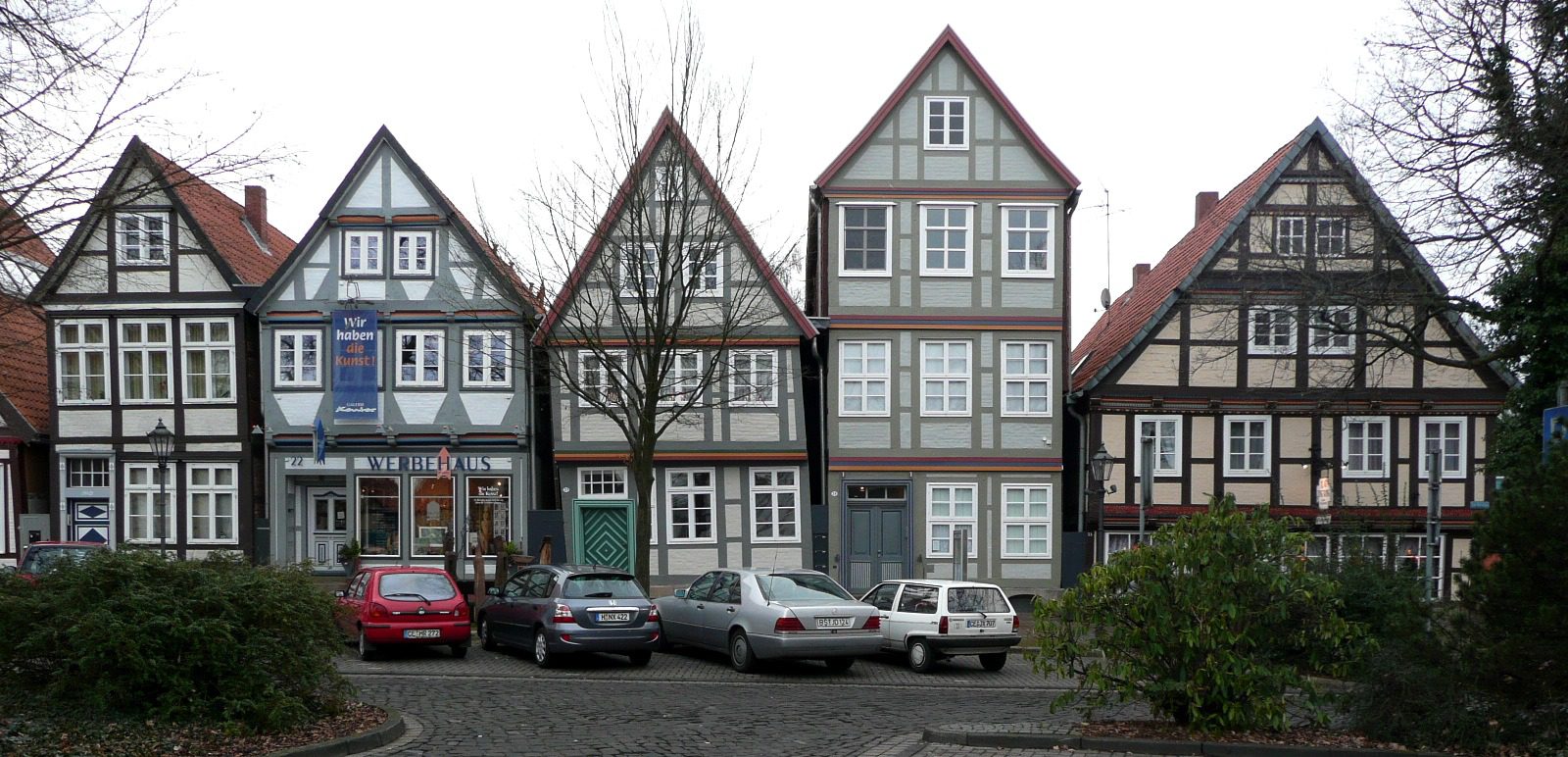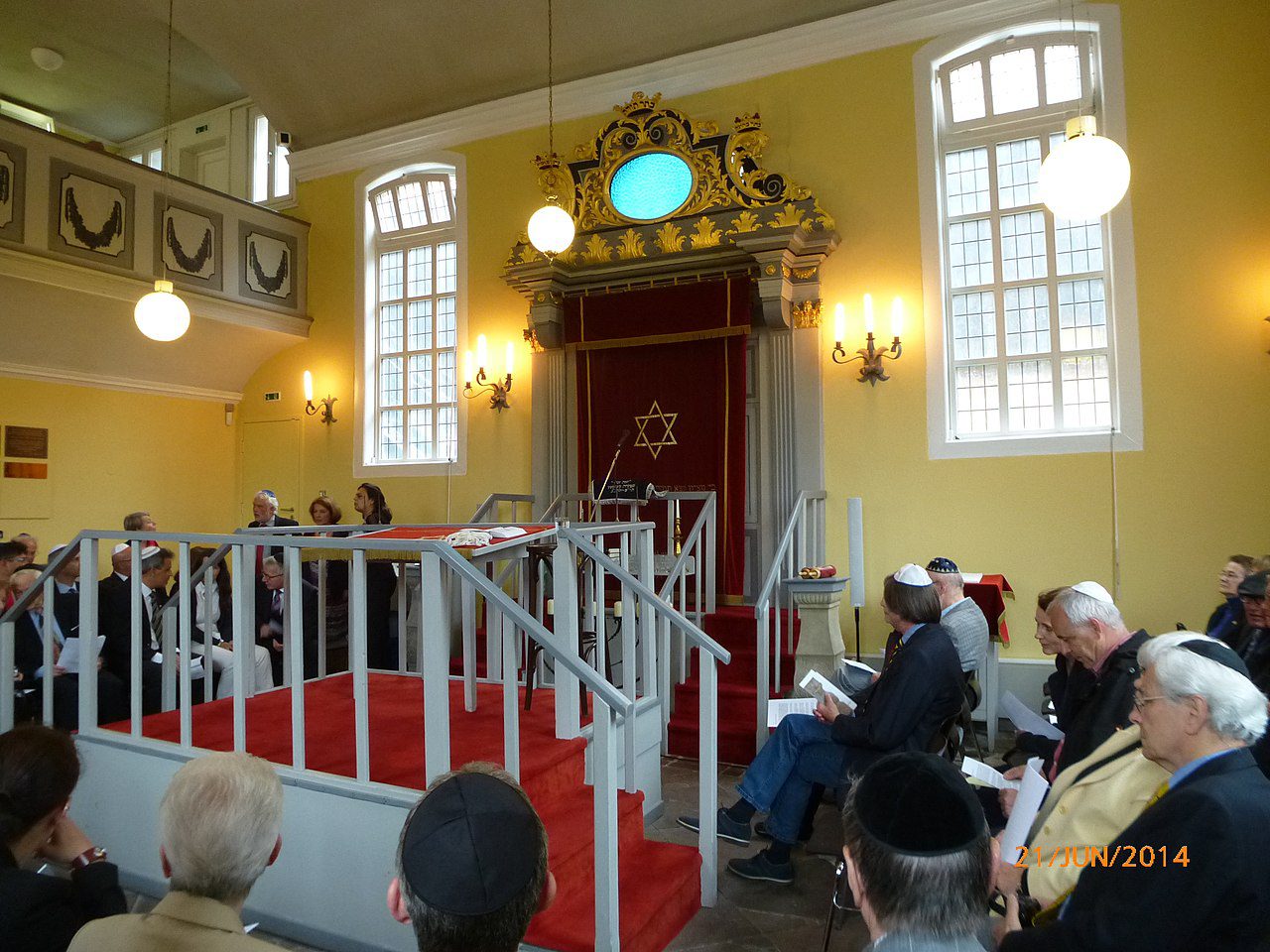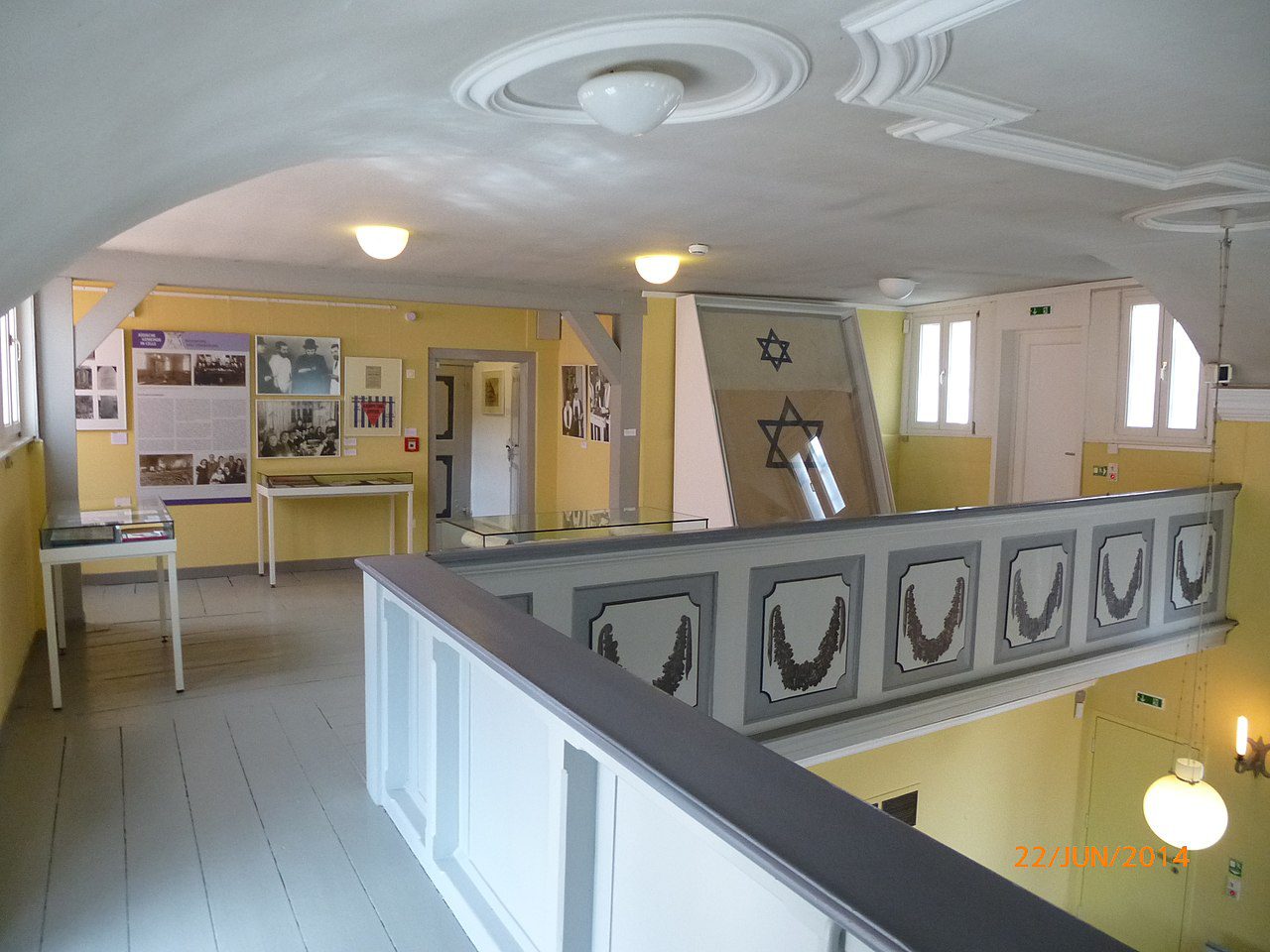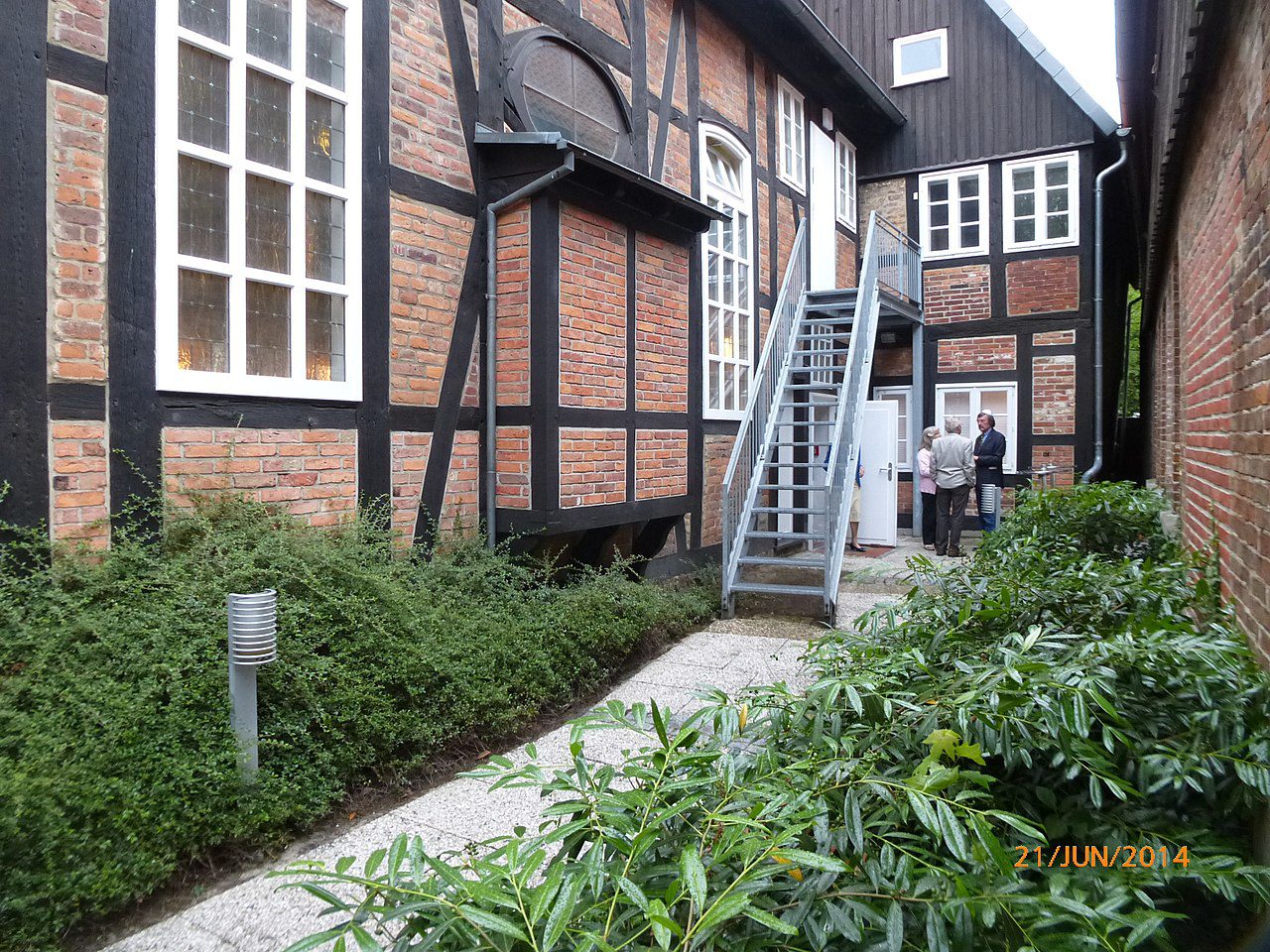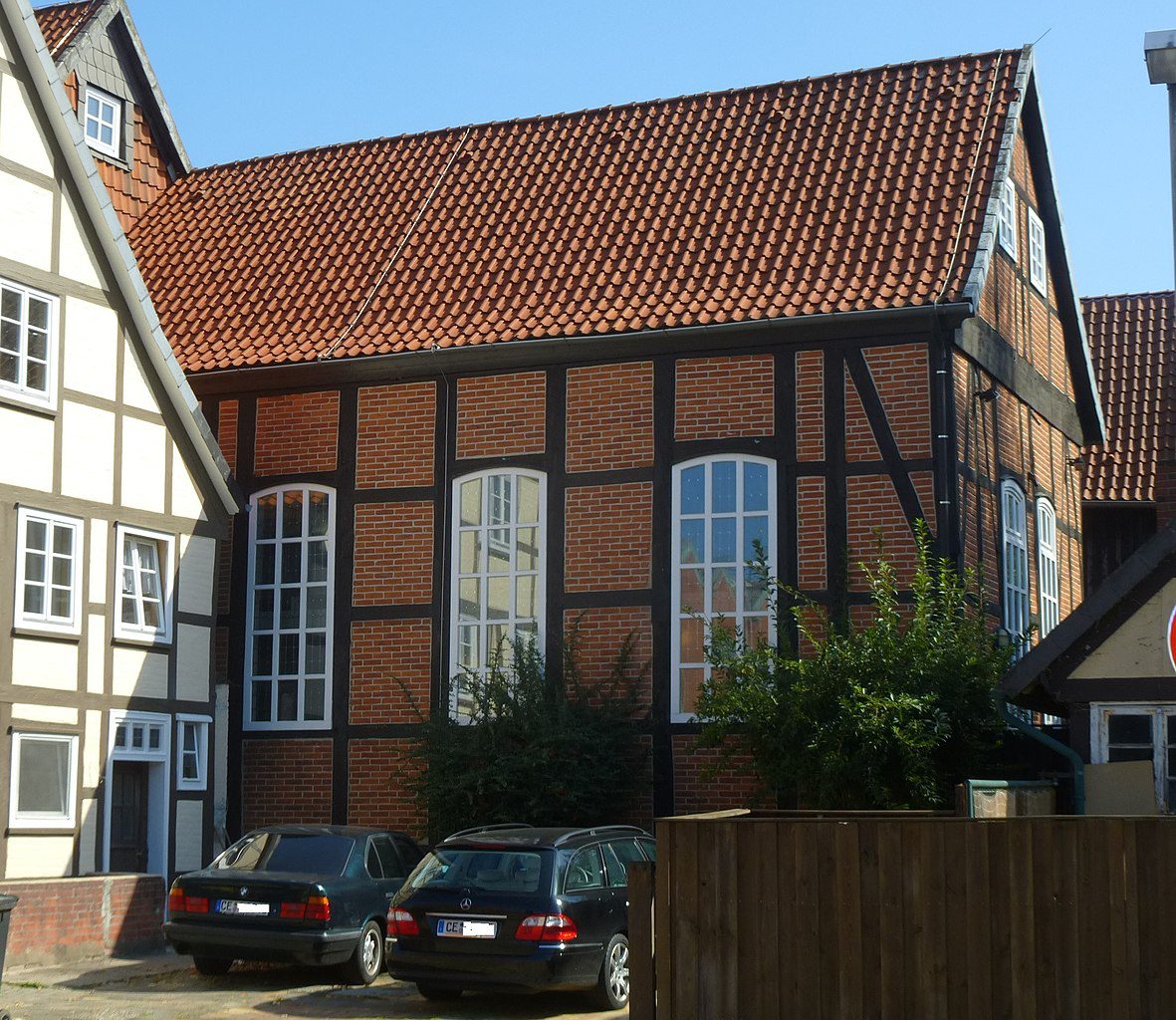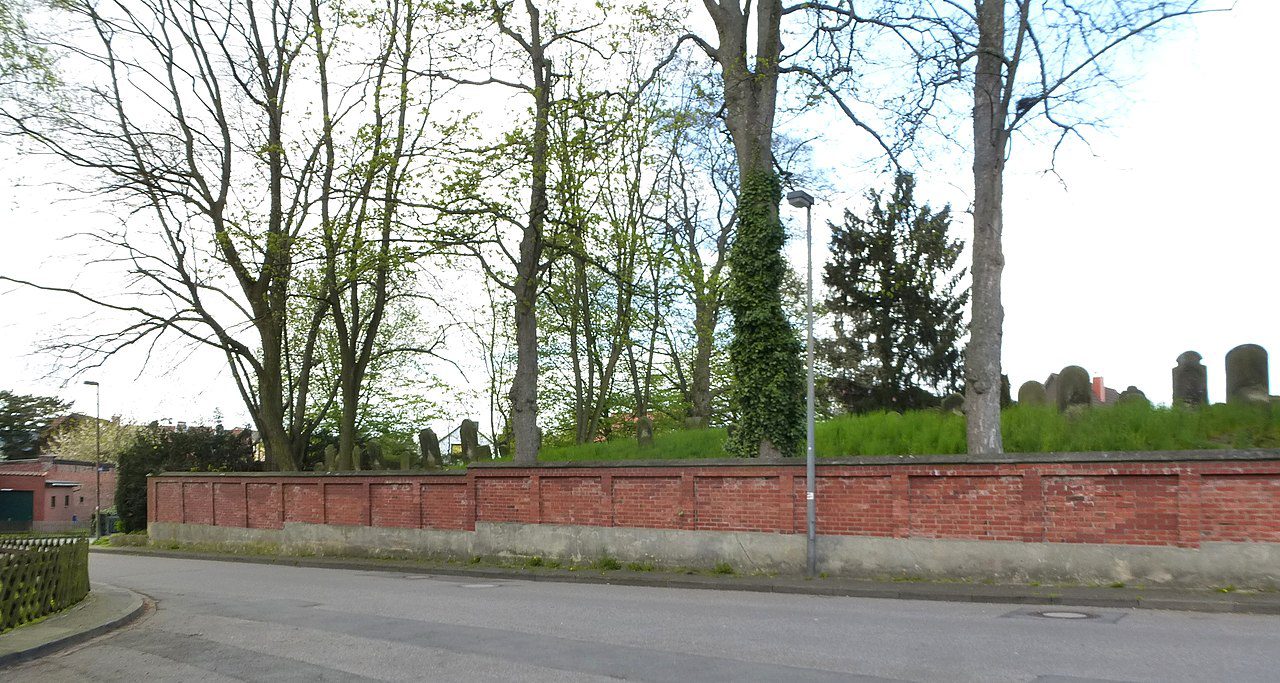Between Harz, Heath and Weser Jewish life in central Lower Saxony_ Celle
Celle_ city
Jewish life in the ducal seat of Celle can only be traced back to the 17th century. The Jewish cemetery, which still exists today, has existed since 1692, and the synagogue since about 1740. The Jewish community flourished in the late 19th century with about 110 members. By 1933 their number had declined to 70, and in October 1939 only 15 people of Jewish faith were still living in Celle. On the night of the pogrom in 1938, the interior of the synagogue was completely destroyed. The few remaining Jewish inhabitants were deported to the extermination camps of Eastern Europe in the years 1941-1944. A community no longer existed. The reestablishment took place under completely different circumstances: Due to the proximity to the DP camp Bergen-Belsen, the third largest Jewish post-war community in the territory of today’s Lower Saxony developed in the town – a temporary life until emigration. Today’s Jewish community was re-established in 1997.
Celle in detail
Jewish life in the ducal seat of Celle can only be traced back to the 17th century.Between 1673 and 1690, five “Schutzjuden” with families and servants, a total of about 30 people, received ducal permission to settle in a suburb. With about 180 persons (1775) Celle had a large Jewish community in Lower Saxony after the middle of the 18th century. In 1692 the Jews were assigned a place far outside the then town as a burial ground with the condition that they refrain from public funeral ceremonies. Since 1737 the Jews in the principality of Lüneburg were allowed to build a synagogue and already one year later the community acquired two plots of land “Im Kreise” for a synagogue and the construction or reconstruction of two community houses. The synagogue was built as a typical synagogue of the time, not visible from the street – today it is considered the oldest half-timbered synagogue in Lower Saxony, which has been preserved in its essential parts. Since 1997 it has been the place of worship of the New Jewish Community of Celle.
Official censuses of the early 19th century gave a rather favorable picture of the living conditions within the community. Of the 28 Jewish families recorded, nine lived in good financial circumstances, eleven in lower ones. The trades mentioned were cloth trade, a soap boiling, trade with old clothes and pawns and the sale of lots. Seven poor families were dependent on support. After the beginning of legal equality in the Kingdom of Hanover in 1842, then completely in 1871 in the German Reich, Jews also participated intensively in public social life in Celle. Also, in the late century, Jewish merchants were among the first to turn to modern business and distribution methods such as department stores and mail order; like Meyersche Textilkaufhaus or Berliner Kaufhaus für Bedarfsartikel in the city center. The Jewish community in Celle was loyal to the emperor and nationally minded, and thus no exception in Germany: ceremonial services were held for the Sedan celebrations and for the “Centennial for the high-souled Kaiser Wilhelm I” in 1897, and a petition service was held in the synagogue in August 1914 at the beginning of the war. Nevertheless, anti-Semitic leaflets appeared even before the turn of the century.
By 1933 the number of Jews in Celle had fallen to 70, and in October 1939 only 15 people of the Jewish faith were still living here. In the pogrom night of 1938 the interior of the synagogue was completely destroyed. The building was only preserved because its fire would have endangered the surrounding half-timbered houses. The few remaining Jewish inhabitants were deported to the extermination camps of Eastern Europe in the years 1941-1944. A community no longer existed.
The beautiful old town survived the Second World War essentially undestroyed, only a late air raid devastated the area around the freight station on April 8, 1945, severely hitting a train filled with concentration camp prisoners. After the liberation, the British military administration housed about 1,000 Jewish displaced persons (DPs) from the overcrowded “barracks camp” in Bergen-Belsen in the Celle “Heidekaserne” – today’s town hall. The Eastern European, mainly Polish DPs developed into an important post-war community with 560 members (1947) and close ties to the “Central Committee of Liberated Jews in the British Zone” in Bergen-Belsen, there was even a daily shuttle by truck. Jewish patients were admitted to the Glyn Hughes Hospital in Bergen-Belsen, a former Wehrmacht hospital, for inpatient care. The important journal “Unzer Sztyme” of the She’erit Hapleita, the “Remnant of the Survivors,” was started in Celle – in the absence of typewriters with Hebrew letters still handwritten on matrices. But it was a temporary community, almost all members emigrated to Israel or to the main host countries USA, Canada, Australia or Great Britain as soon as they opened their borders. The rabbi of the post-war congregation, Israel Moshe Olewski, emigrated to the USA in 1950. It is not known when the remnant congregation disbanded – 1967 was the last time it was mentioned. The present congregation was re-established in 1997. It uses the old Celle synagogue, which was acquired by the city of Celle in 1969 and extensively restored in 11973/74, after the new consecration on June 20, 1974 by Rabbi Dr. Nathan Peter Levinson of Heidelberg. Today the synagogue is the center of new Jewish life in Celle with guided tours, events and exhibitions.
The main logistician of the Holocaust, Adolf Eichmann, lived under a false name about 14 kilometers from Celle in Eveste, not far from the former Bergen-Belsen concentration camp, after his escape from an American POW camp in 1946-1950. Subsequently, with the help of the Vatican, he absconded to Argentina via the “rat line“.

